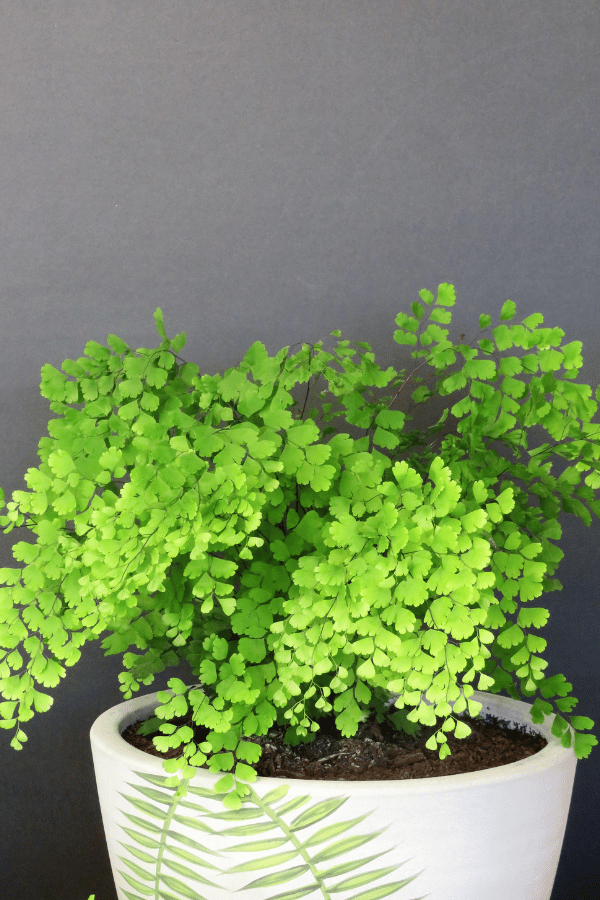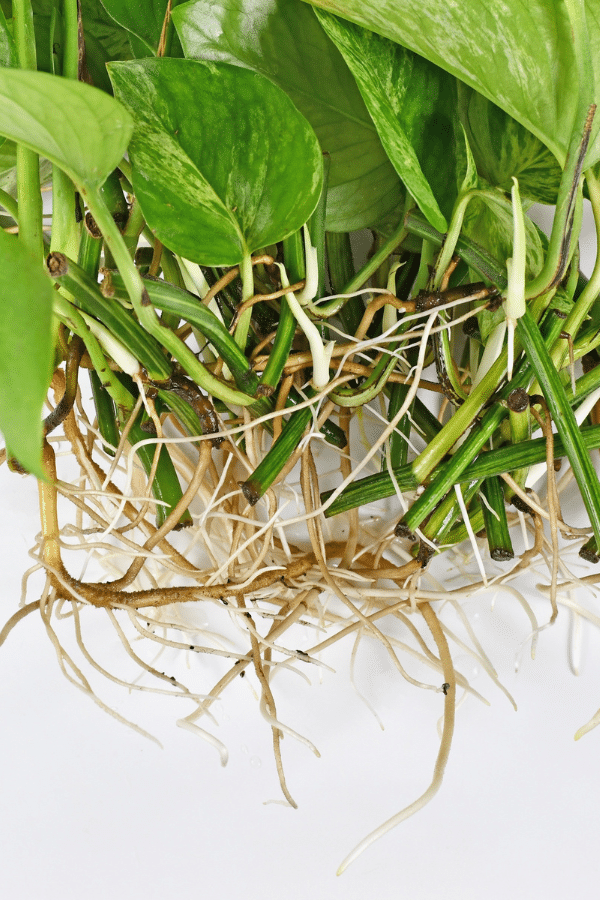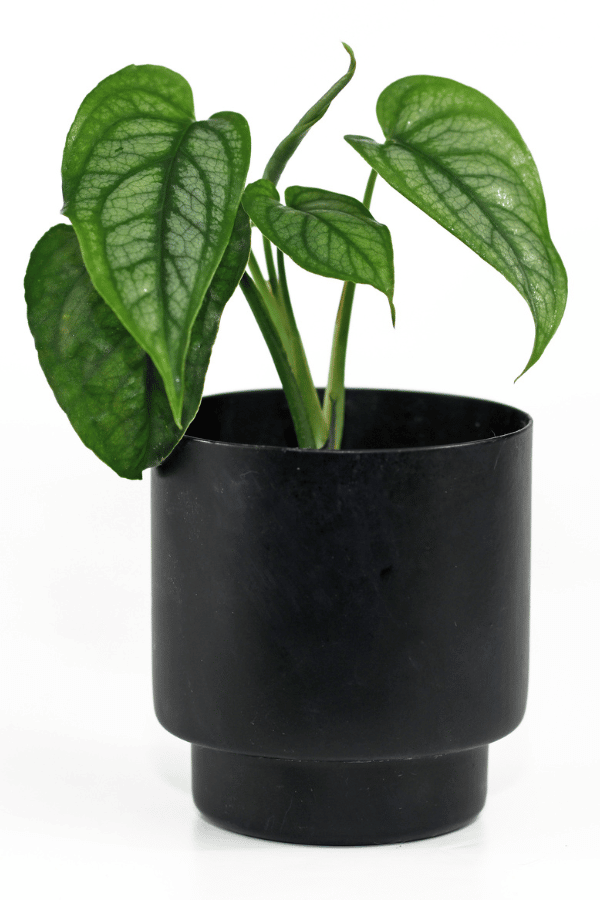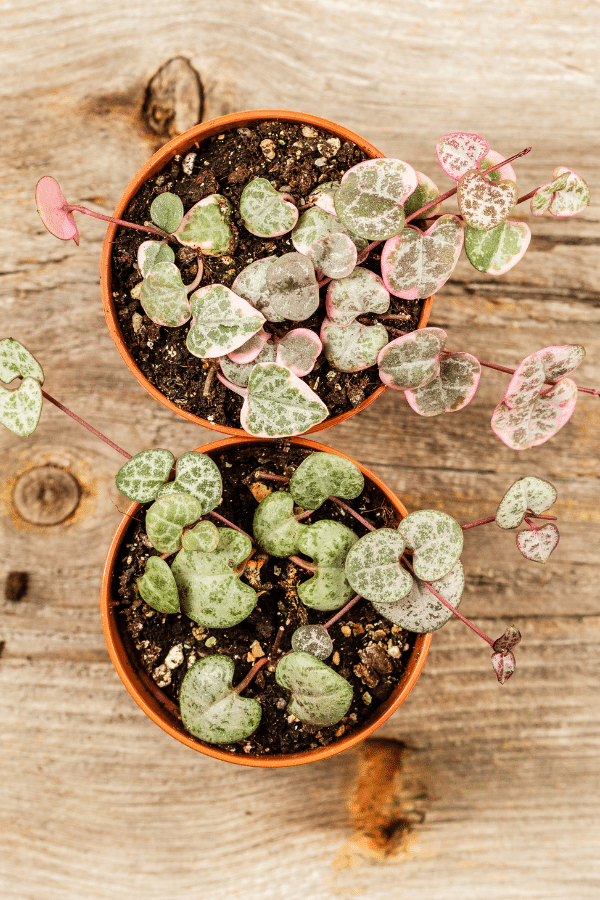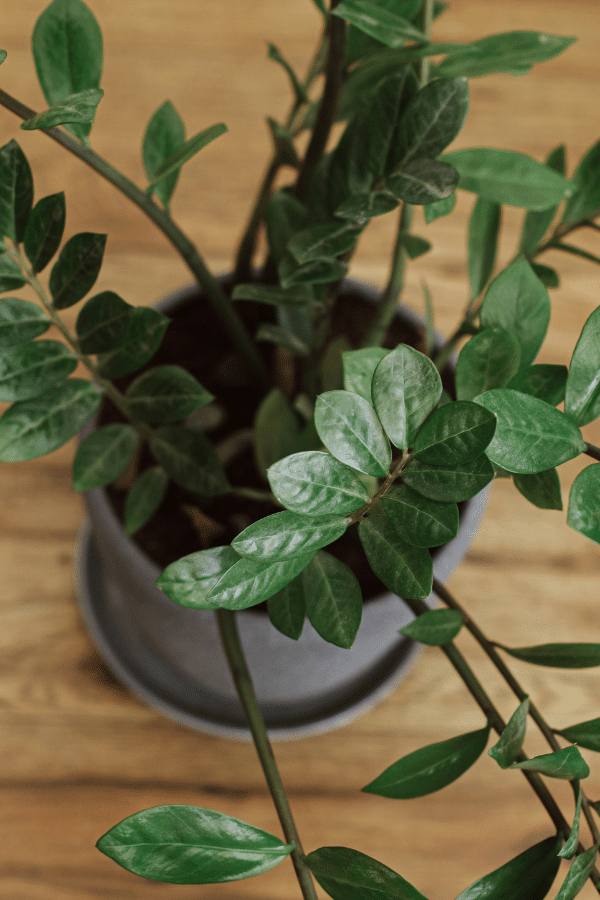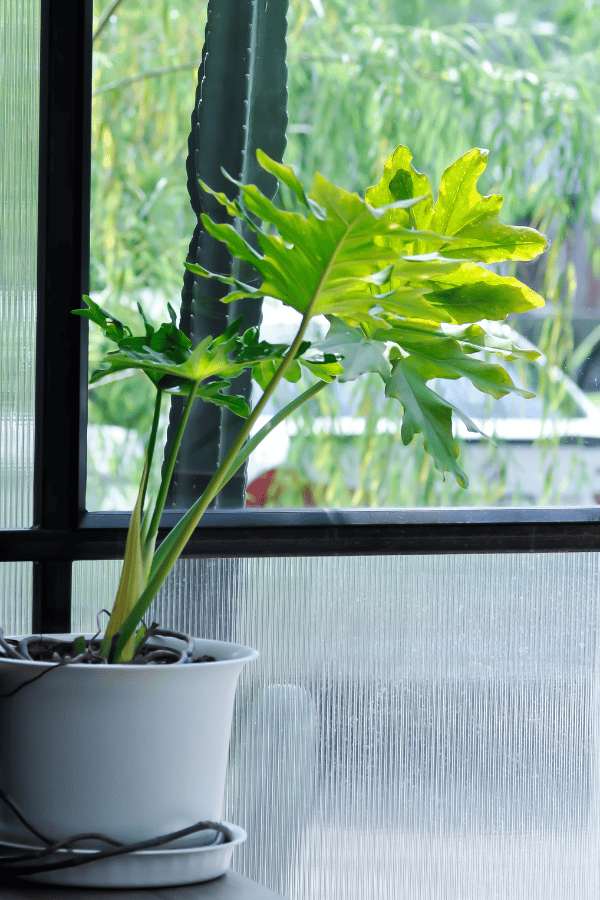Stromanthe Triostar
Scientific Name: Stromanthe Sanguinea, Stromanthe Triostar
Common Name: Stromanthe Triostar
Stromanthe Triostar care is neither easy nor hard. This plant needs specific care requirements in order to grow healthy from the correct amount of sunlight and water, you’ll understand everything you need to know about this plant to grow it healthy and strong.
To give this Stromanthe plant the best care, it requires well-draining soil that is rich in organic matter, keep soil moist by watering often, provide it with bright sunlight, with ideal temperatures ranging from 65-80F.
Quick Care Overview
| Common Name | Stromanthe Triostar |
| Scientific Name | Stromanthe Sanguinea |
| Family | Marantaceae |
| Origin | Brazil |
| Growth Rate | Slow |
| Identification | White, pink, and green swirled leaves |
| Height | Up to 4 feet tall |
| Soil | Well-draining soil rich in organic matter |
| Water | Keep the soil moist |
| Temperature | 65-80F |
| Sunlight | Bright indirect light |
| Toxic to Cats & Dogs | No |
| Toxic to Humans | No |
| Pests | Thrips, scale, spider mites |
| Diseases | Root rot, mold issues |
Below we will dive deep into this Stromanthe Triostar care guide.
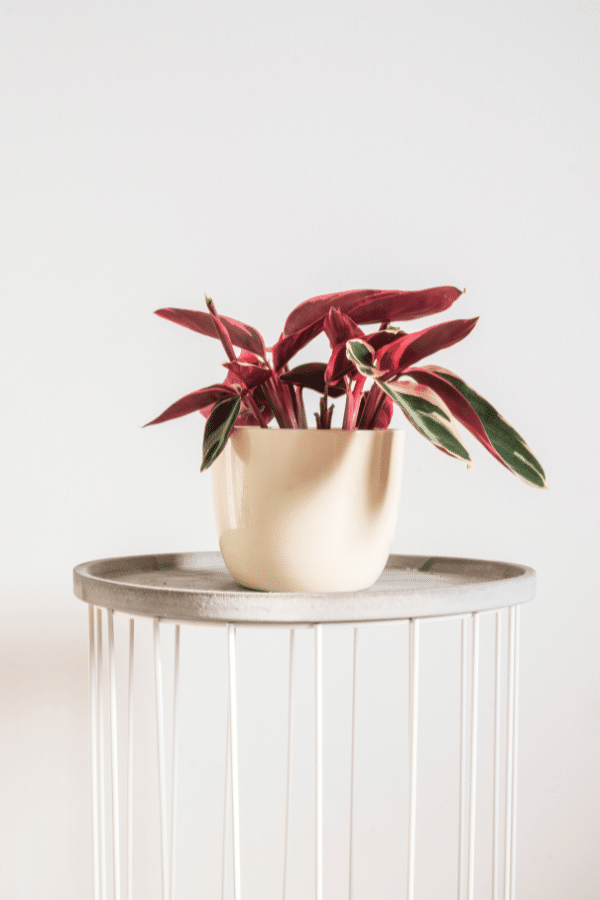
Stromanthe Triostar History
Native to the rainforests of Brazil, Stromanthe Triostar, otherwise known as Magenta Triostar or Tricolor Plant, is a multicolored ornamental plant in the prayer plant family. Its gorgeous green and white variegated foliage with pink undersides have made it popular among houseplant collectors. Being a prayer plant, the foliage of Stromanthe Triostar leaves forward and away from the sun based on its leaves. In the evening, leaves will fold upright, displaying the deeply colored undersides of their foliage.
Stromanthe Triostar Identification
Stromanthe Triostar presents with lovely variegated swirled-patterned leaves that are multicolored in varying shades of white, pink, and green. The undersides of the foliage of this plant will be either maroon or dark pink. Leaves may become up to 12 inches.
Stromanthe Triostar Growth Facts
Stromanthe Triostar is a perennial plant that is quite slow-growing. Interestingly, every plant will have a distinctly different variegation pattern on its foliage – no two plants will be the same.
How Big Does a Stromanthe Triostar Get?
When grown under ideal conditions, this plant may grow up to 4 feet tall with a spread of up to 2 feet.
Stromanthe Triostar Care
Like many other tropical plants, Stromanthe Triostar care enjoys being grown in a warm and humid environment. This plant is not considered particularly easy for beginners, so make sure that you take the time to understand the requirements needed to keep this plant happy.
Stromanthe Triostar Soil
Stromanthe Triostar likes to be grown in a growing medium that is well-draining, moisture-retentive, and rich in organic matter. An excellent growing substrate for this plant is composed of regular potting mix with incorporations of coco coir and perlite. Organic matter, such as compost, may be added at a rate of about 10% to improve soil fertility.
Stromanthe Triostar Fertilizer
Although this plant is not a heavy feeder, a twice-monthly feeding during the warm growing season of spring and summer from a balanced liquid fertilizer indicated for houseplants will encourage lush foliar growth. Ensure that you follow all label instructions and do not fertilize this plant from late fall to winter during dormancy. Overfertilization may harm your plant.
Stromanthe Triostar Watering
For the best Stromanthe Triostar care, this plant should remain relatively moist throughout the growing season. Therefore, depending on growing conditions will likely need to be watered two to three times a week. Compared to other plants, this plant has relatively high watering requirements. Once the top 1-2″ of soil has dried, you should rewater your plant. During the colder months, water frequency should be reduced. However, it is essential to note that this plant can experience issues related to overwatering and so it is imperative that you do not give this plant too much water.
Stromanthe Triostar Light Requirements
Unlike many other houseplants, Stromanthe Triostar loves shade and will tolerate dappled sunlight such as from a northern window. However, as this is a variegated plant, Stromanthe Triostar should not be kept in extremely low-light conditions, as this will cause its beautiful variegation to fade. Alternatively, this plant is very sensitive to direct light, and direct sun exposure should be avoided. Too much exposure to direct sunlight will quickly lead to crispy, browned leaves and loss of variegation. A sheer curtain is recommended if you place your Stromanthe Triostar near a sunny window.
Stromanthe Triostar Temperature & Humidity
Being a tropical plant, Stromanthe Triostar prefers to be kept in warm temperatures, between 65 to 80 degrees Fahrenheit. However, this plant will tolerate temperatures down to 40 degrees Fahrenheit, but unfavorable conditions will halt growth. It is important to note that this plant will not tolerate being exposed to temperatures over 90 degrees. Stromanthe Triostar needs to have humidity levels above 50% for optimal health. Therefore, adding a humidifier or pebble tray to the home to increase humidity may be a good idea. The higher the humidity, the healthier your plant is likely to be.
Repotting Stromanthe Triostar
Stromanthe Triostar will need to be repotted every couple of years when roots are seen growing out of the drainage holes of its container. Early spring is an ideal time for repotting. Ensure that you select a container with ample drainage.
Stromanthe Triostar Maintenance & Pruning
This plant does not require much in the way of pruning and maintenance. Any damaged, diseased, or discolored leaves may be removed periodically as needed.
Stromanthe Triostar Propagation
Propagation of Stromanthe Triostar may be done easily through either rhizome division or stem cuttings. Rhizome division may be done in spring or summer. To propagate through Rhizome division, remove the parent plant and separate it into new plants that may each be potted in their own tray. If roots are very tangled, you may use a sharp, clean blade to divide the plants. Newly potted plants should be refreshed with fresh soil, watered thoroughly, and placed into indirect light. Alternatively, you may root stem cuttings in either water or soil. Cuttings should be at least 8″ long and must remain moist to encourage rooting.
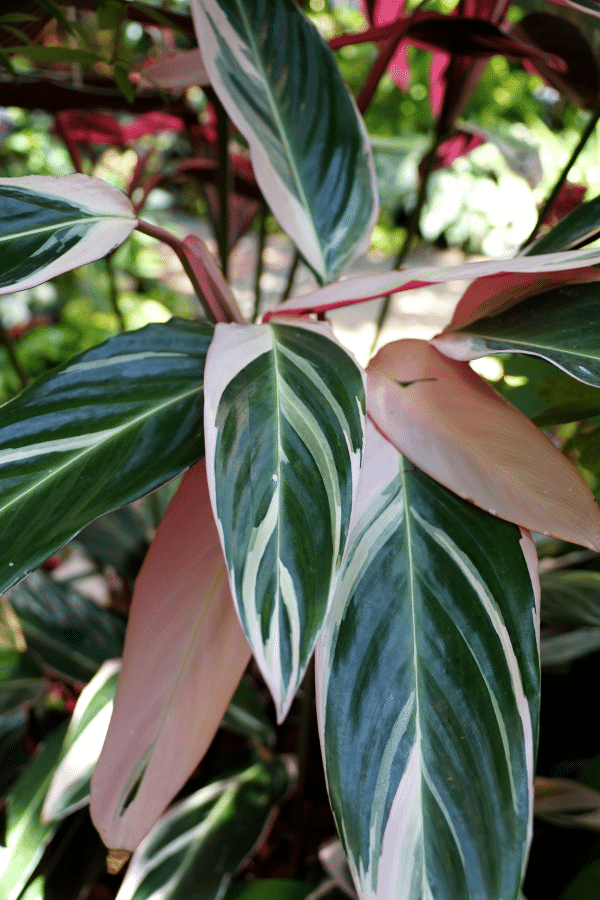
Stromanthe Triostar Toxicity
Stromanthe Triostar plants are not toxic to humans and pets, so they are safe to keep around children and pets in the house.
Toxicity to Humans
Stromanthe Triostar is not considered toxic to humans and is safe to be kept around children.
Toxicity to Cats & Dogs
Luckily, Stromanthe Triostar is considered non-toxic to pets and is safe for cats and dogs to be around.
Stromanthe Triostar Problems
Stromanthe Triostar Leaves Turning Yellow
While Stromanthe Triostar loves to remain consistently moist, if this plant has blocked drainage holes or is oversaturated with water, it may lead to root rot or fungal infection, which will cause yellowing of the leaves. Alternatively, the yellowing of foliage may be caused by overfertilization of the plant.
Stromanthe Triostar Leaves Turning Brown
When it comes to Stromanthe Triostar, the most common cause of browning foliage is lack of humidity or low soil moisture. High temperatures or overexposure to sunlight may also lead to the browning of the leaves. Ensure that you water your plant regularly and that there is adequate humidity in the air.
Stromanthe Triostar Diseases
Stromanthe Triostar loves high humidity. However, without good air circulation, this may lead to fungal, bacterial, or mold issues. Ensure that you do not overwater your plant, and if issues persist, utilize a fungicide following all label instructions.
Stromanthe Triostar Pests
Like many other tropical houseplants, Stromanthe Triostar may become affected by several indoor pests such as thrips, spider mites, and scale. If you suspect your plant has an infestation, isolate it and treat it with a pesticide such as neem oil or insecticidal soap.
OTHER RESOURCES You May Like:
FAQ
Why Is My Stromanthe Triostar Curling?
Curling leaves on the Stromanthe Triostar is due to the water it is receiving. It is either underwatered or the plant is being affected by the chemicals in tap water, such as fluoride and chlorine. Consider giving it rainwater, distilled water, or let the tap water sit out overnight before watering the plant to allow the minerals in the water to escape.
Why Is My Stromanthe Triostar Drooping?
If your Stromanthe Triostar is drooping its leaves, it means the plant is not receiving enough sunlight. Provide it with more natural light or supplement with an artificial grow light.
Is Stromanthe Triostar a Calathea?
Coming from the Marantaceae family, the Stromanthe Triostar is a close relative of the Calathea and they do come from the same family.

